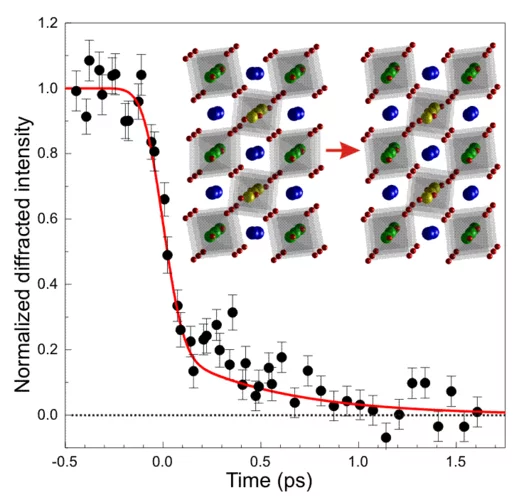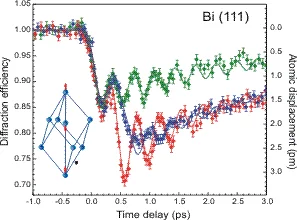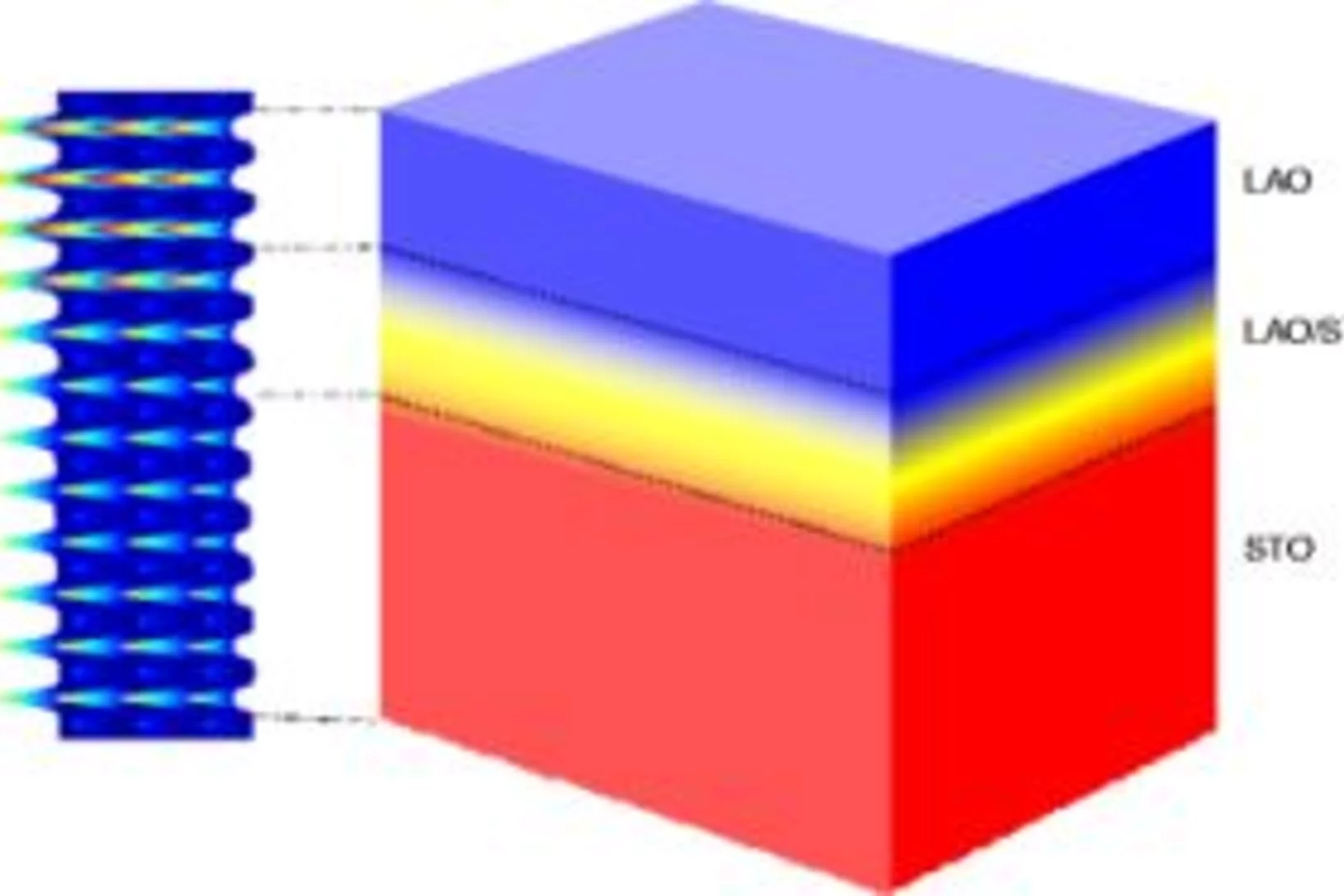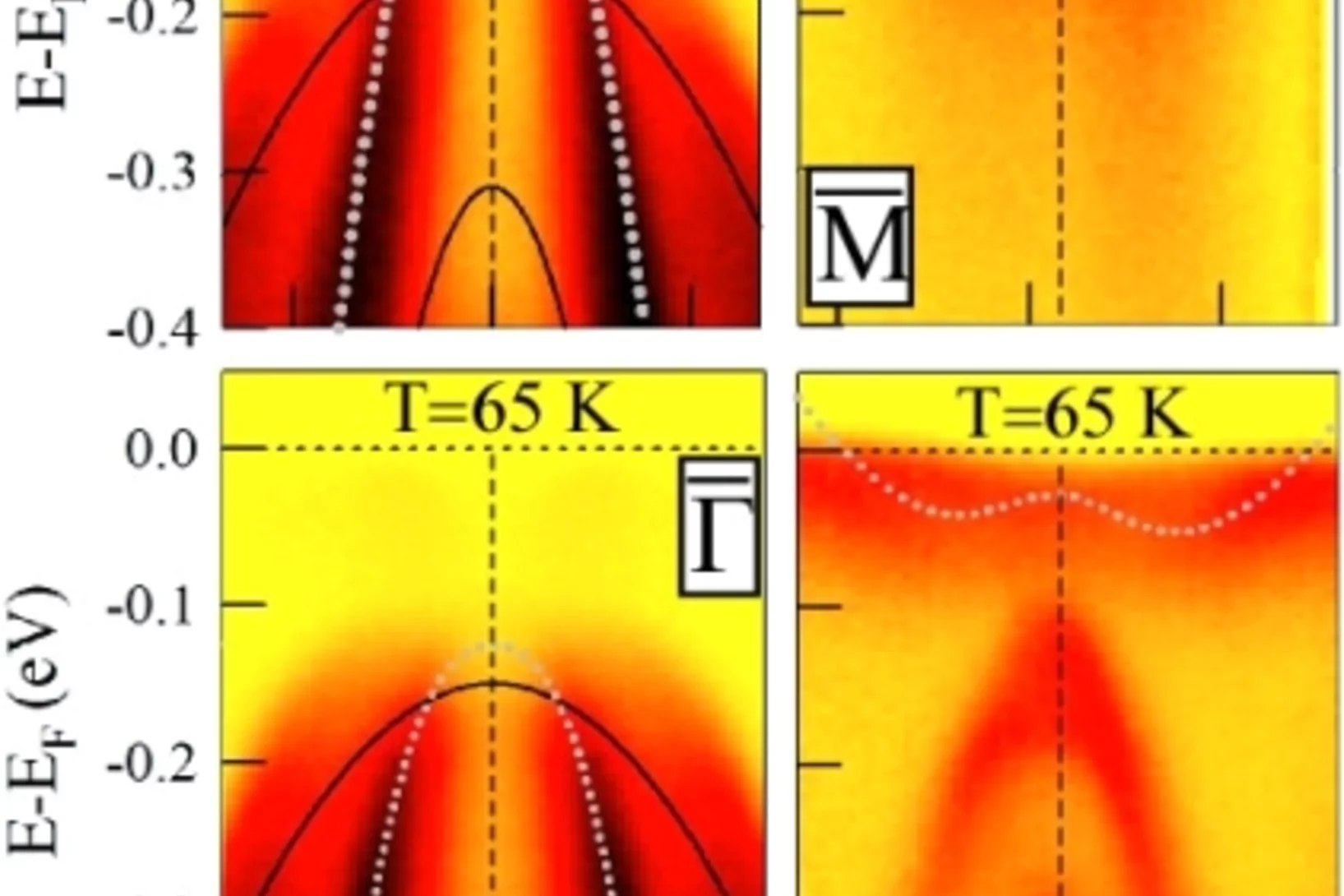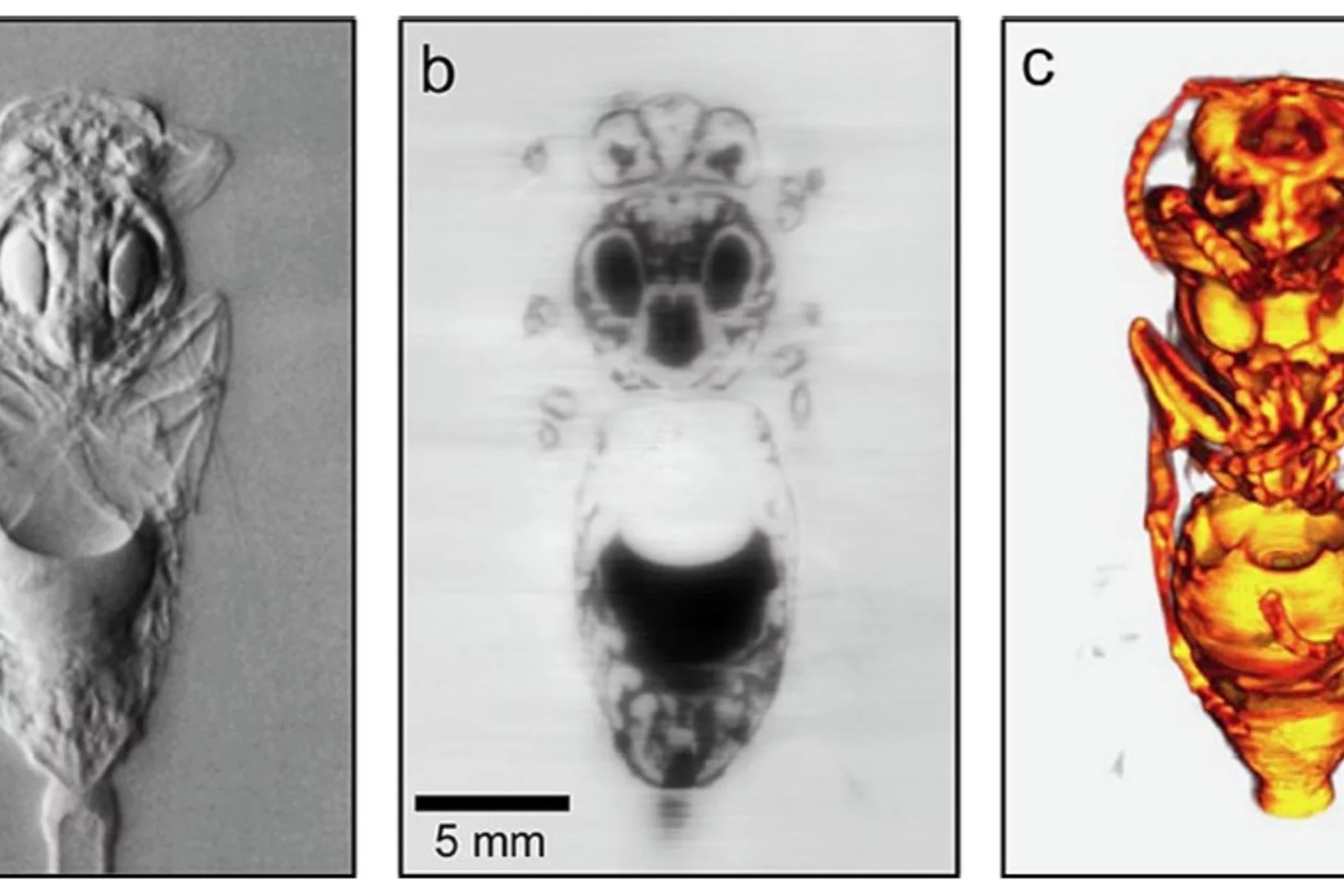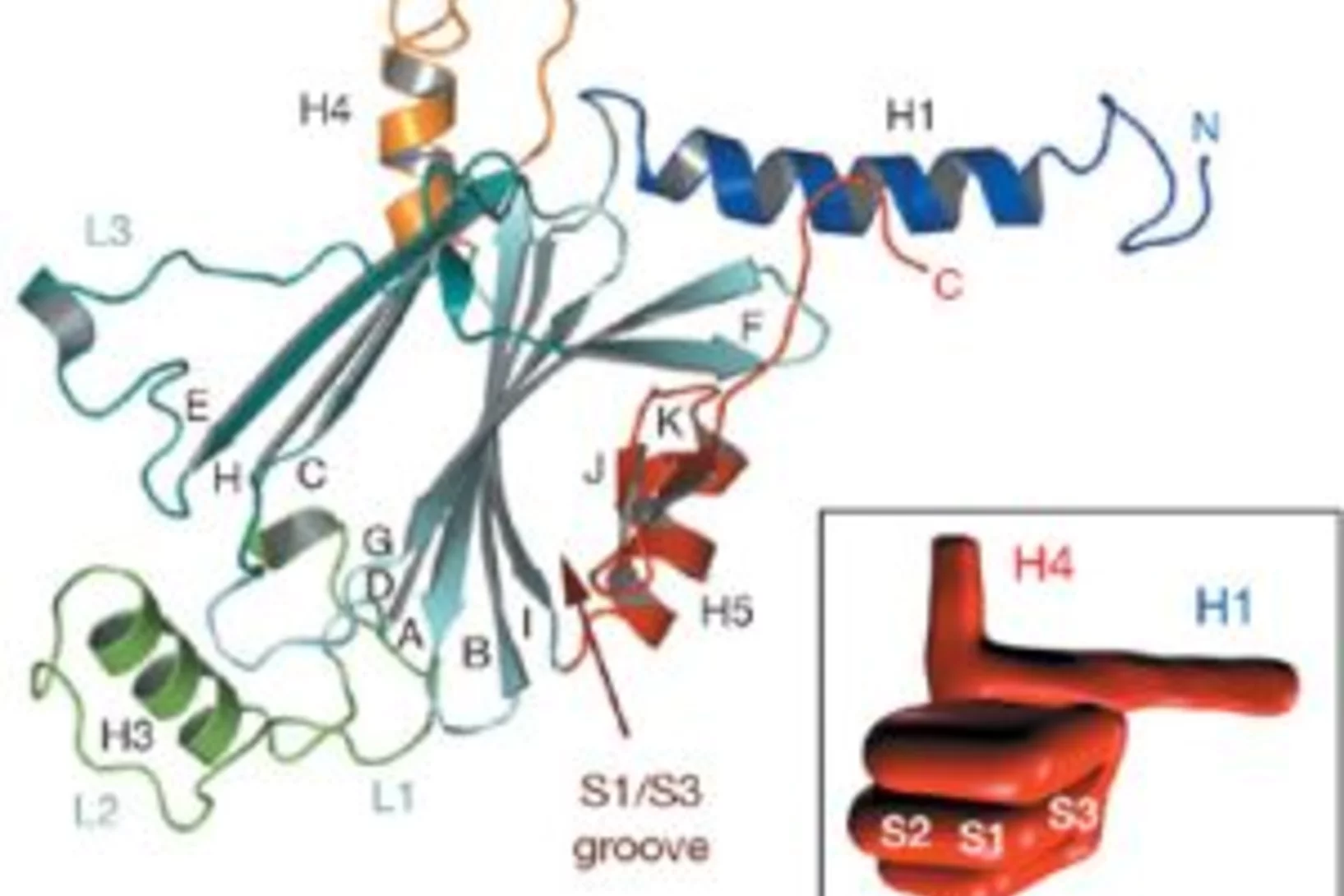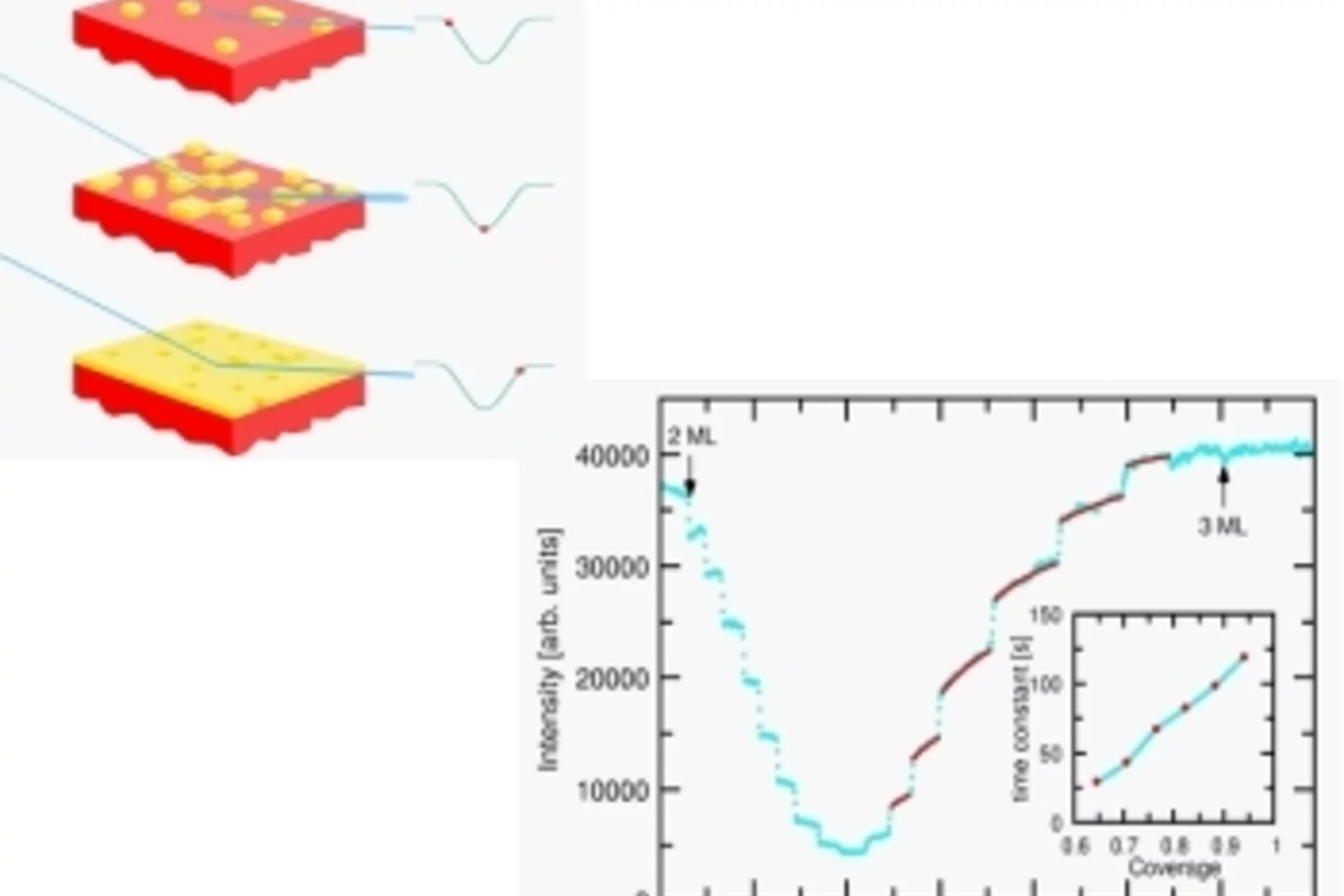LaAlO3 - Buckling under pressure to hand over the charges
In this paper, we report on the change in the atomic structure of the conducting interface between the insulators LaAlO3 and SrTiO3 as a function of the LaAlO3 layer thickness. We discovered that the atoms at the interface buckle in an attempt to counteract the internal electric field produced when these two insulators touch one another.
Observation of a ubiquitous three-dimensional superconducting gap function in optimally doped Ba0.6K0.4Fe2As2
The iron-pnictide superconductors have a layered structureformed by stacks of FeAs planes from which the superconductivity originates. Given the multiband and quasi three-dimensional1 (3D) electronic structure of these high-temperature superconductors, knowledge of the quasi-3D superconducting (SC) gap is essential for understanding the superconducting mechanism.
Röntgenpreis for X-Ray research goes to Christian David
On 26th November 2010, Christian David, scientist at the Laboratory for Micro and Nanotechnology, received the Röntgenpreis for research in radiation science. David pioneered a method to enhance the quality of X-ray images. He received the award jointly with Franz Pfeiffer from Technische Universität München who worked closely together with him.
The award
Direct Determination of Large Spin-Torque Nonadiabaticity in Vortex Core Dynamics
We use a pump-probe photoemission electron microscopy technique to image the displacement of
vortex cores in Permalloy discs due to the spin-torque effect during current pulse injection. Exploiting the
distinctly different symmetries of the spin torques and the Oersted-field torque with respect to the vortex
spin structure we determine the torques unambiguously, and we quantify the amplitude of the strongly
Moving Monopoles Caught on Camera - researchers make visible the movement of monopoles in an assembly of nanomagnets
For decades, researchers have been searching for magnetic monopoles; isolated magnetic charges, which can move around freely in the same way as electrical charges – since magnetic poles normally only occur in pairs.
High-resolution method for computed nano-tomography developed
A novel nano-tomography method developed by a team of researchers from the Technische Universität München (TUM), the Paul Scherrer Institute (PSI) and the ETH Zurich opens the door to computed tomography examinations of minute structures at nanometer resolutions. The new method makes possible, for example, three-dimensional internal imaging of fragile bone structures. The first nano-CT images generated with this procedure was published in the renowned journal Nature on September 23, 2010.
Understanding plastic semiconductors better
New method allows important insights into polymer semiconductors
Semiconductors made from polymer materials are becoming increasingly important for the electronics industry – as a basis for transistors, solar cells or LEDs – showing important advantages when compared to conventional materials: they are lightweight, flexible and very cheap to produce.
New X-ray technique distinguishes between that which previously looked the same
A new method forms the basis for the widespread use of an X-ray technique which distinguishing types of tissue that normally appear the same in conventional X-ray images
Observation of a d-wave nodal liquid in highly underdoped Bi2Sr2CaCu2O8+δ
A key question in condensed-matter physics is to understand how high-temperature superconductivity emerges on adding mobile charged carriers to an antiferromagnetic Mott insulator. We address this question using angle-resolved photoemission spectroscopy to probe the electronic excitations of the non-superconducting state that exists between the Mott insulator and the d-wave superconductor in Bi2Sr2CaCu2O8+δ.
Watching atoms move: an ultrafast phase transition
One approach to advance our understanding of the complex interactions between different degrees of freedom in strongly correlated systems is to use time-resolved methods to study the response of a material after it has been driven out of equilibrium. Ultrafast optical techniques have demonstrated considerable potential to unravel the correlations that drive the interesting physics in such materials.
Confinement-Induced Orientational Alignment of Quasi-2D Fluids
Extreme confinement is known to induce ordering of the fluid, thereby affecting its properties.
Advanced phase contrast imaging using a grating interferometer
Conventional absorption based X-ray microtomography can become limited for objects showing only very weak attenuation contrast at high energies. However, a wide range of samples studied in biology and materials science can produce significant phase shifts of the X-ray beam and thus phase contrast X-ray imaging can provide substantially increased contrast sensitivity.
Electrons with opposite spins move in opposite directions
In one dimension, there are only two ways to move: left or right. This leads to some peculiar properties for one-dimensional systems on the atomic scale.
Putting the squeeze on phonons
Photon squeezing has been the subject of intense interest in the field of quantum optics, since it serves as a unique demonstration of the quantum nature of light. On a practical level, squeezing offers opportunities to make interferometric measurements much more precise than would normally be allowed by quantum uncertainty limits. In principle, the physics of squeezing may be applied to many different types of bosons.
A fast selenium derivatization strategy for crystallization and phasing of nucleic acid structures
The growing number of biologically important nucleic acid sequences (DNA and RNA) demands a fast and reliable method for their de novo three-dimensional structure determination. In this work, we described a fast and inexpensive strategy for the crystallization and phasing of structures of nucleic acid and nucleic acid/protein complexes.
Exciting Heavy Metal
Photocatalysts play an important role in a broad range of applications, from photochemical conversion of light energy into chemical energy through to initiating novel chemical reactions. One family of compounds that has attracted much attention is the dinuclear d8-d8 platinum, rhodium and iridium complexes that have a highly reactive electronic excited state.
Building blocks of an artificial kagome spin ice: Photoemission electron microscopy of arrays of ferromagnetic islands
Arrays of dipolar coupled ferromagnetic islands arranged in specific geometries provide ideal systems to
directly study frustration. We have examined with photoemission electron microscopy the magnetic configurations
in three basic building blocks of an artificial kagome spin ice consisting of one, two, and three rings.
The kagome spin ice arrangement is particularly interesting because it is highly frustrated and the three
Super-Resolution X-ray Microscopy unveils the buried secrets of the nanoworld
A novel super-resolution X-ray microscope developed by a team of researchers from the Paul Scherrer Institut (PSI) and EPFL in Switzerland combines the high penetration power of x-rays with high spatial resolution, making it possible for the first time to shed light on the detailed interior composition of semiconductor devices and cellular structures.
The first super-resolution images from this novel microscope will be published online July 18, 2008 in the journal Science.
Coherent Diffraction Imaging Using Phase Front Modifications
We introduce a coherent diffractive imaging technique that utilizes multiple exposures with modifications to the phase profile of the transmitted wave front to compensate for the missing phase information.
X-ray dark-field imaging using a grating interferometer
A type of X-ray imaging that shows detail otherwise lost, and which is compatible with conventional radiography instrumentation is now feasible, reports a study published online in Nature Materials. This technique offers unprecedented resolution for several applications, including medical imaging, security screening and industrial non-destructive testing.
Pushing atoms on a swing
The typical time scale of atomic motion during fundamental physical processes such as phase transitions in solids or molecular dynamics in chemical reactions ranges from ten to hundreds of femtoseconds. The direct observation of these processes on an atomic length scale therefore requires utrashort light pulses at wavelengths capable of resolving the underlying atomic structures.
The conducting meat in the insulating sandwich
In 2004, it was discovered that when a layer of LaAlO3 (LAO) is in contact with a layer of SrTiO3 (STO), an ultrathin layer of highly conducting material is formed where they contact one another, despite the fact that both LAO and STO are insulators. The underlying physics responsible for this phenomenon is still much disputed, despite a worldwide concerted research drive since then to explain it.
The exciting story of TiSe2
In this story of TiSe2, experiment and theory meet to provide an explanation for a long-standing enigma. In this system, the electrons rearrange themselves spontaneously at low temperature, resulting in a new periodicity from that of the original lattice. This phase change is driven by a decrease in the total energy of the system. However, the nature of this transition has been a matter of controversy for a long time.
Is Smaller Stronger?
In 2004 researcher discovered that a single crystalline metal is stronger when the sample volume is reduced to the micron or even submicron range. In an ongoing debate on the origin of this phenomenon classical deformation theories are questioned. The suspicion that structural defects, i.e. deviations from perfect crystalline structure would play an important role in the smaller is stronger effect, could not be verified because of the lack of an appropriate measuring technique.
Making the invisible visible
Using x-rays scientists have learned to make the invisible visible. Since almost 100 years doctors use the difference in x-ray absorption between bones and tissue to diagonose their patients.
A virus in a nutshell
Nature has found remarkable ways to protect sensitive objects. One example is the seed of a nut which is protected by its shell. Another are viruses from the cypovirus family. They are hidden inside tiny natural crystals where they can survive harsh conditions until they meet their target, the gut of the silkworm. Here the virus is released from the crystal causing a virus infection of the worm. Researchers have now unraveled the structure of these natural protein crystals.
A microscope without a lens
It is known since a long time that x-rays, which are nothing but light of very short wave length, can be used for microscopy. This is particularly attractive because due to the small wave length x-rays allow studying objects which are invisibly small in an optical microscope.
Looking inside fossilised embryos
Although only recently discovered, the fossil record of embryonic development has already begun to challenge cherished hypotheses on the origin of major animal groups. Synchrotron-based X-ray Tomographic Microscopy has provided unparalleled insight into the anatomy and preservation of these fossil remains and this has allowed us to test competing hypotheses on their nature.
Phase Imaging with Neutrons
Neutrons are usually considered as small massive particles with a size of about 10^-15 meters. Due to the wave-particle duality of quantum mechanics, however, they can equivalently be considered as matter wave packets whose spatial extent may be large enough to show interference effects similar to what can be observed with visible laser light.
How to avoid atomic sandpaper
When growing thin films of novel materials, smooth surfaces are a must. How else could one stack them layer by layer, as needed in optical coatings, sensors or conductors? One method known to produce atomically smooth films is Pulsed Laser Deposition (PLD).









